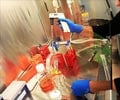Treatment and Prevention of Leishmaniasis (Kala-Azar)
Cutaneous and Mucosal Leishmaniasis (Kala-azar)
Small, inconspicuous skin lesions may heal by themselves, even without treatment. This can take months or even years. Ugly scars are often left behind. If the sores are large or located in cosmetically important sites, then treatment has to be called for.
Drugs like Pentavalent antimony, Amphotericin B, Pentamidine isethionate are available as injections. The association of pentavalent antimony with toxicity is known. These drugs are hence used with great caution. Oral drugs such as fluconazole, itraconazole, and ketoconazole are also used.
Visceral Leishmaniasis
Liposomal amphotericin B is a highly effective and well tolerated drug. But its use in developing countries is limited by the high cost. Drugs containing pentavalent antimony are widely used. The development of resistance against this drug is posing threats to treatment of leishmaniasis in India. However in such areas where resistance is present, the drug miltefosine has been found to be effective.
Severe (advanced) cases of visceral leishmaniasis may lead to death if left untreated.
Prevention of Leishmaniasis
There are no available vaccines that can prevent leishmaniasis. The best way is to protect oneself from being bitten by sandflies. When travelling to places notorious to harbour this disease, try to reduce outdoor activities from dusk to dawn, i.e. when the sandflies are active. Minimize the amount of exposed skin; use insect repellents; stay in well-screened areas; use bed nets (medicated ones if possible).







